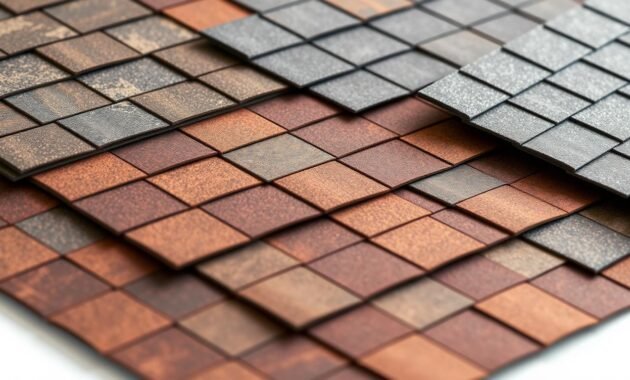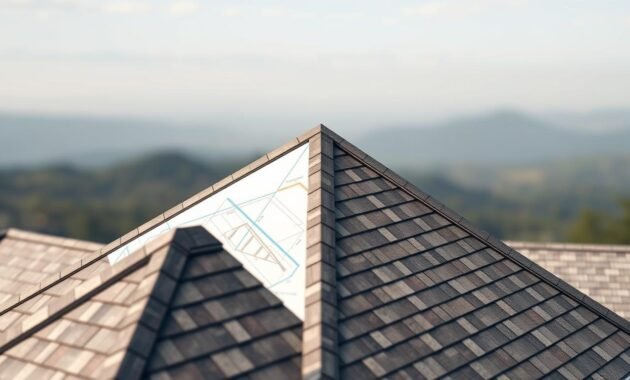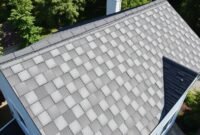Are you trying to figure out how many bundles of shingles you need for your roof? Roofing math can be tough, making it hard for homeowners and contractors. Without the right info, you might buy too much or too little, wasting resources.
Learning about roofing square calculations is key to protecting your home. I’ll share the important details you need to accurately estimate your roofing needs. This way, you’ll get the right amount of shingles for a great-looking roof.
In this guide, we’ll cover all you need to know about bundles, shingles square measurements, and how to estimate roofing materials. You’ll become a pro at measuring your roof!
Understanding Roofing Square Measurements
When you’re planning to replace your roof, knowing about roofing measurements is key. Roofing pros use a special measurement system. It might seem odd at first, but it’s really simple. It helps figure out how many bundles you’ll need for your roof.
What Defines a Roofing Square
A roofing square is a standard measure of 100 square feet of roof area. It’s a 10×10 foot space that contractors use to figure out costs. For instance, a 2,000 square foot roof is the same as 20 roofing squares.
Why Squares Matter in Roofing
Knowing about shingles square measurements is important. It helps homeowners and contractors get the right amount of materials. This system makes it easy to:
- Figure out total roof coverage
- Determine how many shingle bundles you’ll need
- Estimate project costs
- Account for material waste
Converting Square Feet to Roofing Squares
To turn your roof’s square footage into roofing squares, just divide by 100. This easy math makes figuring out how many bundles you need for your roof much easier.
| Roof Size | Square Feet | Roofing Squares |
|---|---|---|
| Small Roof | 1,000 | 10 |
| Medium Roof | 2,000 | 20 |
| Large Roof | 3,000 | 30 |
Read also: What is a Square of Shingles and Square Footage on the Roofing Area?
How Many Bundles of Shingles in a Square
Knowing how many bundles of shingles you need is key for planning your roofing project. Most roofs need three bundles for every square of roof area.
Here are the main points about shingles bundle needs:
- One roofing square equals 100 square feet of roof area
- Typically, 3 bundles of shingles cover one square
- Each bundle contains between 15 and 29 individual shingles
- Bundle coverage ranges from 30 to 35 square feet
Different shingle types affect how many bundles you’ll need. Three-tab shingles usually need 3 bundles, but architectural or premium shingles might need 4 bundles per square.
| Shingle Type | Bundles per Square | Coverage |
|---|---|---|
| Three-Tab Shingles | 3 bundles | 100 sq ft |
| Architectural Shingles | 3-4 bundles | 100 sq ft |
| Luxury Shingles | 4 bundles | 100 sq ft |
Pro tip: Always buy an extra bundle or two. This can help with any damage or mistakes during installation. It’s a small investment that can save you a lot of time and trouble.
Different Types of Shingles and Their Coverage
When planning a roofing project, it’s key to know about the different shingles and their coverage. Each architectural shingle type has its own features. These features affect how many bundles you’ll need and your project’s cost.

Three-Tab Shingle Coverage
Three-tab shingles are the most common and affordable choice for homeowners. They usually come in bundles of 26 to 29 shingles. Each bundle covers about 33.3 square feet. The coverage for three-tab shingles is easy to understand.
- Standard coverage: 33.3 square feet per bundle
- Typically require 3 bundles per roofing square
- Most budget-friendly roofing option
Architectural Shingle Requirements
Architectural shingles offer a more textured look and are more durable than three-tab shingles. They usually have 20 to 22 shingles per bundle. This makes them a good choice for those looking for a better roof.
- More textured appearance
- Longer warranties (30-50 years)
- Slightly higher cost per bundle
Luxury Shingle Specifications
Luxury shingles are the top choice for roofing. They require 3 to 6 bundles per square, depending on the brand.
| Manufacturer | Shingle Type | Bundles per Square |
|---|---|---|
| CertainTeed | Belmont | 4 bundles |
| CertainTeed | Grand Manor | 5 bundles |
| GAF | Slateline | 3 bundles |
Your choice of shingles depends on your budget, style preferences, and how long you want the roof to last. Each type has its own benefits for your roofing project.
Calculating Roof Area and Material Needs
Getting the right roof area measurement is key for a good roofing cost estimate. Knowing how to figure out your roof’s square footage can save you time and money.
I’ll show you the important tools and methods for measuring your roof. This will help you accurately estimate your material needs. Here are the main steps:
- Measure the base area of your roof by multiplying length and width
- Account for roof pitch using multiplication factors
- Calculate total square footage
- Determine the number of shingle bundles needed
Calculating roof area involves looking at several factors. Let’s go over the key parts:
| Roof Pitch | Area Multiplier | Recommended Extra Materials |
|---|---|---|
| 3:12 pitch | 1.031 | 10-15% additional materials |
| 6:12 pitch | 1.118 | 15-20% additional materials |
| 9:12 pitch | 1.250 | 20-25% additional materials |
Pro tip: Always round up your material needs when estimating costs. This way, you won’t run out of supplies and face delays.
- Standard bundle covers approximately 33 square feet
- One roofing square equals 100 square feet
- Always purchase an extra bundle for future repairs
Using these tools and methods will help you make a precise material estimate. This saves you money and avoids extra trips to the hardware store.
Factors Affecting Shingle Bundle Requirements
When planning your roofing, knowing your roof’s details is key. Different roof shapes can change how many shingle bundles you need for a good job.

Roof Pitch Considerations
The roof’s pitch is very important for shingle bundle needs. Steeper roofs need more materials because they’re bigger and harder to install. Here are some important tips for roofing:
- Steep roofs increase total square footage by up to 20%
- Higher pitches require additional bundles for proper coverage
- Slope angles impact material overlap and waste factor
Complex Roof Designs Impact
Complex roof designs can really change how many shingles you’ll need. Features like dormers, skylights, and many angles make it harder to guess how much material you’ll need.
| Roof Feature | Additional Bundles Needed | Waste Factor Increase |
|---|---|---|
| Dormers | 1-2 extra bundles | 15-20% |
| Skylights | 0.5-1 extra bundles | 10-15% |
| Multiple Valleys | 2-3 extra bundles | 20-25% |
By thinking about your roof’s pitch and design, you can figure out how many shingle bundles you’ll need for a great roofing job.
Understanding Shingle Coverage and Square Footage
Choosing the right roofing material means getting the measurements right. Knowing about coverage and square footage is key for a job well done.
Measuring roofs has its own system. It might seem tricky at first. But, a roofing square equals 100 square feet. This makes it easier for everyone to figure out how much material is needed.
Standard Coverage Measurements
How much material you need depends on the type of shingle. Here are the basics:
- Three-tab asphalt shingles need three bundles per square
- Architectural shingles require four bundles per square
- Each bundle has about 26-42 shingles
Area Calculation Methods
To figure out your roof’s area, follow these steps:
- Measure your roof’s total surface in square feet
- Divide that by 100 to find the number of squares
- Then, multiply squares by the number of bundles needed for your shingles
| Shingle Type | Bundles per Square | Shingles per Bundle |
|---|---|---|
| Three-Tab Asphalt | 3 | 29-42 |
| Architectural Shingles | 4 | 20-22 |
Remember, the complexity and pitch of your roof also matter. These can change how many bundles you need for full coverage.
Essential Roofing Materials Beyond Shingles
Creating a roofing materials guide means looking at more than just shingles. Shingles are important, but they’re not everything. A good roof needs many materials working together to keep your home safe.
Here are the key roofing installation tips for essential materials beyond shingles:
- Eave Protection Membrane: Prevents water infiltration at roof edges
- Starter Strips: Creates a solid foundation for first shingle row
- Underlayment: Provides critical waterproofing barrier
- Hip and Ridge Shingles: Covers roof peaks and transitions
Read also: Flat Roof Edge Flashing Installation Process and Guidelines
These extra materials are measured in linear feet, not squares. Each one is key to a strong, weather-resistant roof. Choosing and installing them right helps your roof face tough weather.
| Material | Primary Function | Typical Coverage |
|---|---|---|
| Eave Protection | Water Barrier | 3-foot rolls |
| Underlayment | Moisture Protection | 4×250 foot rolls |
| Starter Strips | Shingle Foundation | 100 linear feet |
| Ridge Caps | Roof Peak Covering | 20 linear feet per bundle |
Even though these materials might seem less important, they’re really key for a lasting roof. Spending on quality materials will keep your home safe and your roof lasting longer.
Professional Tips for Accurate Material Estimation
When planning a shingle roof installation, getting the material right can save you time, money, and stress. My experience shows that accurate estimates need careful planning and calculation.
- Always account for material waste between 10-15%
- Calculate roof area precisely by measuring each plane
- Factor in complex roof design elements
- Consider roof pitch when estimating materials
Roofers suggest a strategic approach to estimating materials. Standard asphalt shingles usually cover one square (100 square feet) per three bundles. Architectural shingles might need five bundles per square.
My best advice for a precise estimate is to add 5-10% extra materials. This helps with unexpected cuts, complex features, and installation issues. Planning ahead can prevent delays and extra costs.
Remember, different shingle types have different coverage rates. Always check the manufacturer’s specs for accurate calculations for your project.
Conclusion
As we wrap up our guide on shingle bundle calculations, it’s clear how important accurate measurements are. Knowing about roofing squares and bundle needs is more than just numbers. It’s about keeping your home safe and making wise choices.
Getting your roof replacement right means paying close attention to every detail. Whether it’s a small shed or a big house, knowing what materials you need can save you a lot. Always add 10-15% to your calculations for waste, like cuts and unexpected issues.
Even with this guide, every roof is different. Things like roof design, pitch, and special features mean you might need a pro for the best estimate. If you’re not sure about your project, don’t be afraid to ask for help.
Now that you know how to measure and calculate roofing squares, you’re ready for your roof replacement. Your careful planning will lead to a strong, well-built roof that will protect your home for many years.




